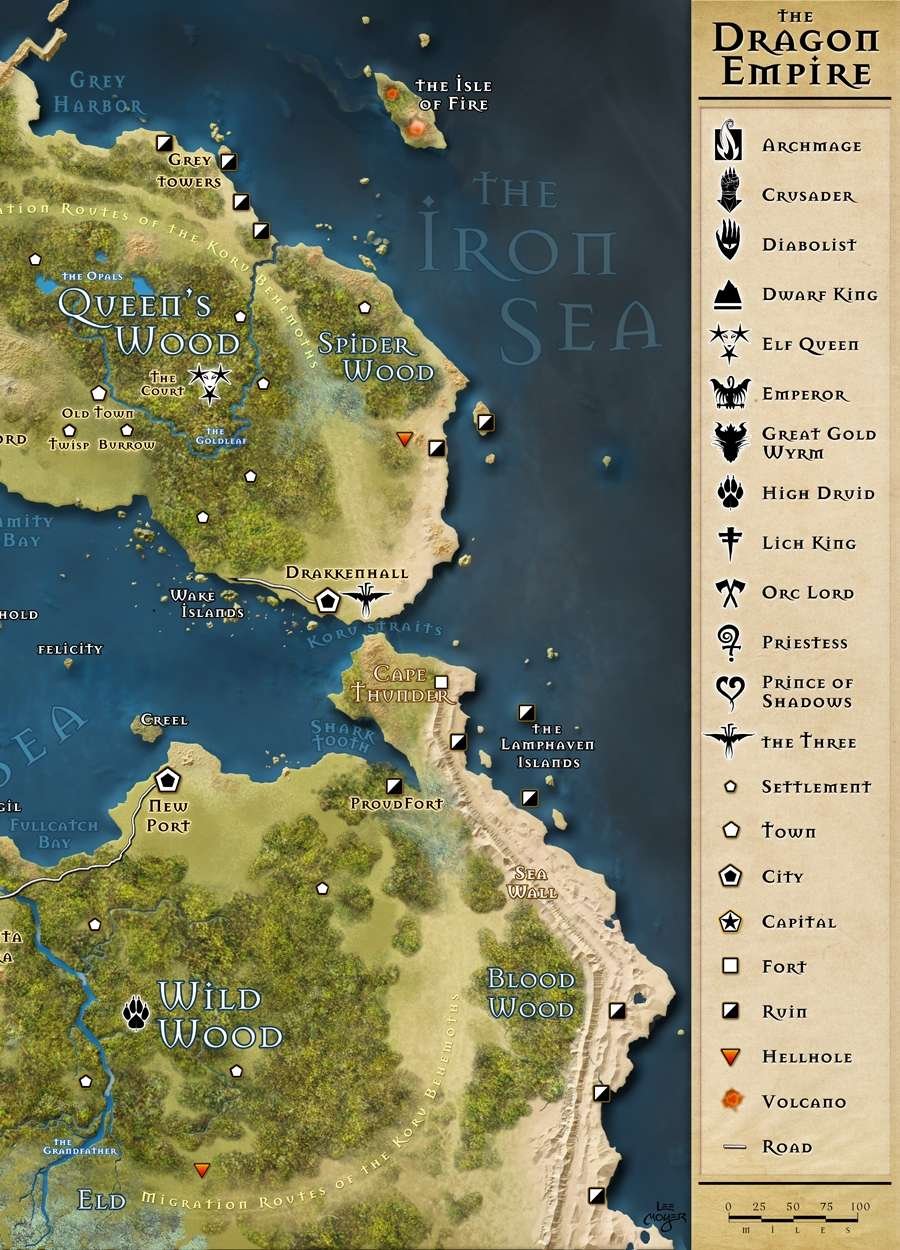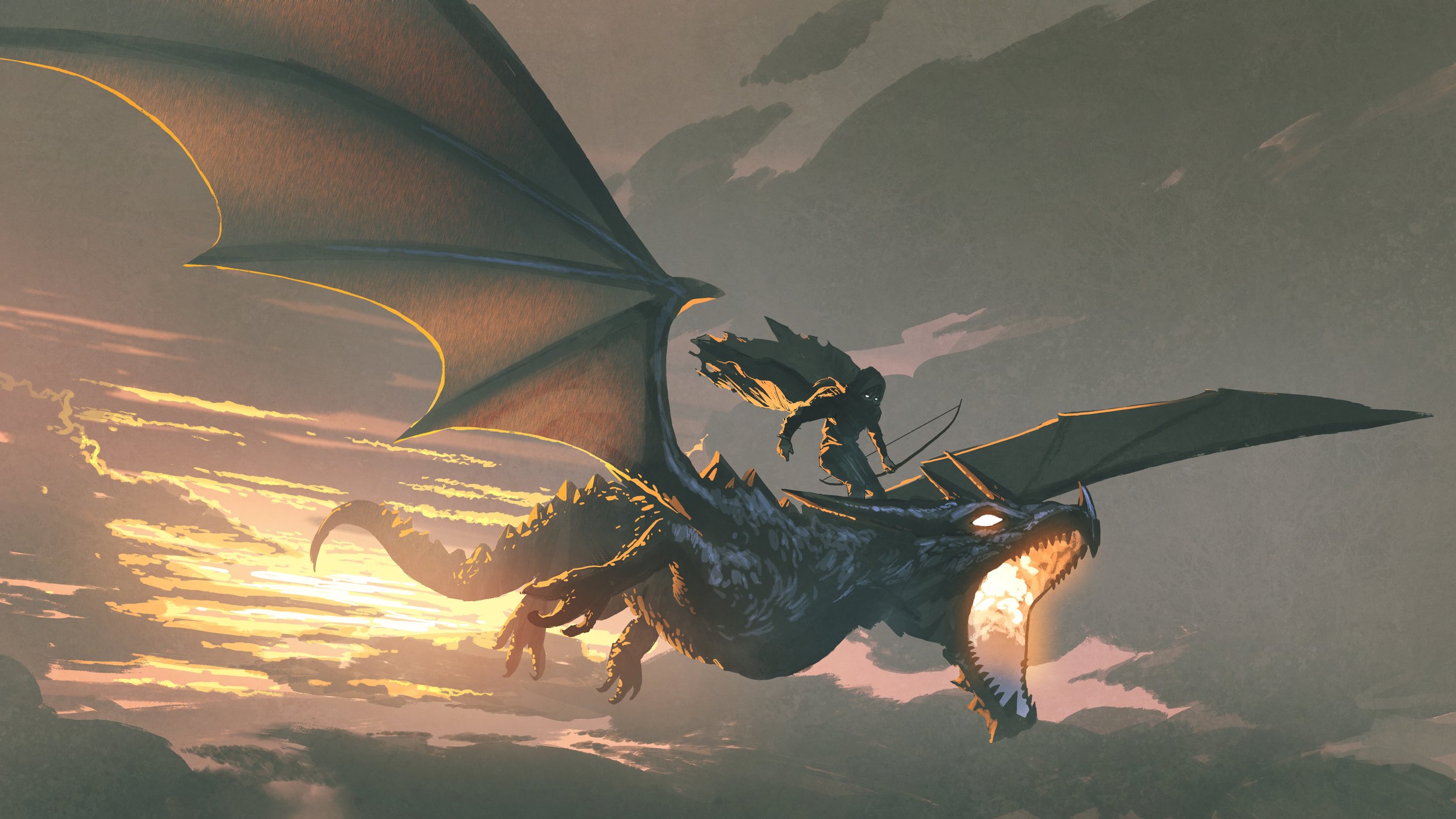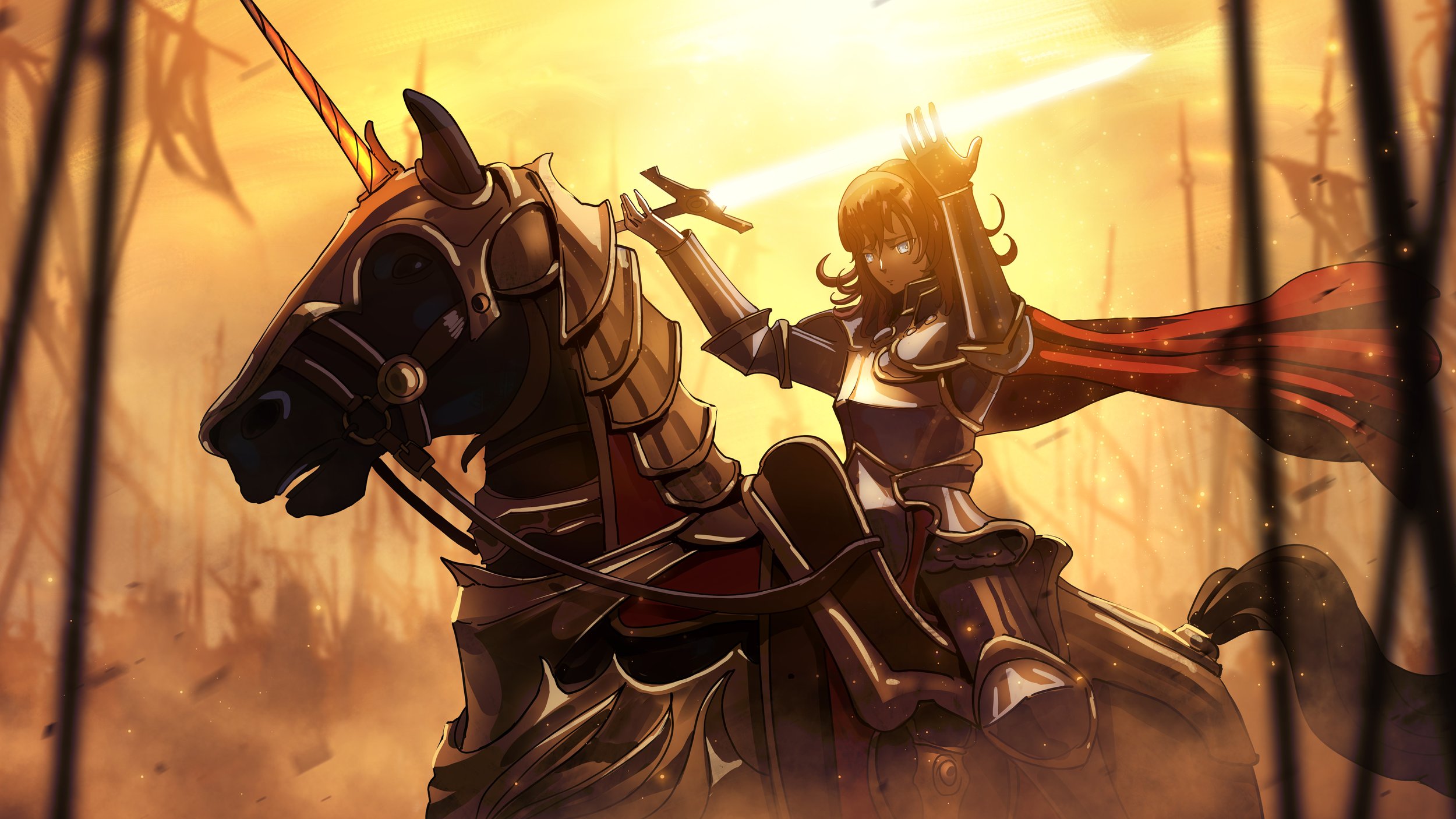Why Real Life is the Hardest RPG
How real life stacks up against the best roleplaying games.
This article includes affiliate links. If you purchase through an affiliate link, I earn a small amount from qualifying purchases.
I love playing role-playing games, whether video games or tabletop. If it’s a great game, you get to travel through beautiful landscapes, meet interesting characters, have exciting action scenes, be part of a fantastic story, and best of all, feel like the hero. It absolutely appeals to my sense of adventure.
There are options for people looking to gamify different aspects of their lives: trackers for building habits, digital missions to encourage you to complete tasks, and others. (Read more 10 Roleplaying Gamification Apps to Add Some Adventure to Your Day-To-Day.)
But what about life as a whole? I’ve never got to cast magic missiles on an enemy or ride a fiery steed in real life. And honestly, the resource system in real life tends to feel rigged, and the grind to level up a skill can be terribly slow. So how does real life (RL) match up Role Playing Games overall?
World System
Games have a predetermined setting and genre. Their map structure ranges greatly in size and typically consists of different regions of varied terrain. Some areas may have level restrictions that limit access until a certain point in the story or when the character’s abilities have reached a minimum for entry. Most worlds have a starting district reserved for tutorial play for new and low-level players. Some games allow for open-world gameplay, while others restrict the player to proceed through the map only as they progress through the story.
In real life, the overall map is HUGE, and there is a sense of unlimited open-world playability. However, in actual gameplay, the sections of the map open to the players can vary greatly. Starting areas are entirely randomized and outside of the control of the player. Maps may or may not have safe areas for low-level players.
There are limitations on their choices for starter zones. While some of these restrictions are lifted as a player ages, the ability to move between regions remains heavily based on the player’s resources, and it is not guaranteed with story progression, leaving much of the map unvisited at game completion.
RPGs' technology and magic systems are also centered around their chosen genre. The RL system may have some variability based on region, but it is primarily early 21st-century tech with little to no magic system. The lack of options on tech and magic impacts player abilities and attributes as well, with the strict limitation to only being able to play a normative human class. However, there are options for players to create or participate in mini-games of imagination, such as movies, books, etc., to widen this restrictive nature.
Resource Management
Most RPGs have some type of resource system, whether it’s a full crafting system or just simple coin. Depending on the game, resources can be gathered, farmed, traded, sold, and earned by either defeating enemies and completing tasks.
Real-life isn’t too much different in that aspect, though there are many more types of resources available and ways to acquire them. The location of resources varies by region, similarly to many games. Low-level characters start with few to no resources but typically have assistance with resource gathering early on. While assistants or companions are not usually available to low-level players in RPGs, low-level resources are often abundant in starting areas that provide a similar result.
Carrying capacity can often be bought or earned in RPGs at set levels. The total resources available to be gathered by a player in RL varies much more significantly and is influenced by one’s spawning ground, character choices, skill levels, other players, and as well as randomized factors outside of the player’s control.
While most RPGs require some type of resource management to succeed, RL is heavily dependent on this. The monetary system feels skewed, and the number of resources earned by a given task varies widely throughout. Most of the player requirements, except for sleep, must be obtained using resources. It is not uncommon to find players spending most of the game time focused only on the tasks related to earning or gathering the basic resources needed to continue survival.
Character Skills
In RPGs, the types of character skills vary widely. They tend to be heavily influenced by the game’s magic, technology mechanics, and characters’ genre and subclass. There is usually a list of skills that players can earn, often combat-centered, such as sword fighting or archery, but can include others like crafting, gathering, and social skills as well. However, the total skill lines available to choose from is usually limited to no more than 5-15, while the inclusion of skill trees in some games provides more variability in specific skills acquired.
Training of skills often starts in a tutorial section located in a low-level region where players are protected from higher-level enemies. Many games have an experience point system that allows skill leveling and differentiation, either earned or purchased. In multiplayer games, lowbie players can also work with higher-level characters to level up their skills faster than they would on their own.
RL has a more expansive list of skill sets available. However, those fully accessible to a new player will vary widely based on starting area, player resources, and general character randomization. A school system may function similarly as a tutorial program with mentoring programs that likewise assist with faster skill leveling.
While RL has a much larger skill selection available, its strict time countdown feature makes it difficult to acquire mastery in more than a few skill lines. Additionally, many skills may be required that are used strictly for resource gathering and not necessarily advancing one’s storyline, so a player may need to strategize their skill improvement process. RL has less definition on what determines a player’s skill level; what one may consider a low level, another character with the same skill proficiency may be seen as a master. This makes any comparison between other players and any leveling-up strategy much more difficult.
Character Customization
In RPGs, the character attributes are typically centered around the game genre and magic system. A fantasy or sci-fi game may allow for other species or wild variation around the human form, while others may only stretch the concept of select human abilities such as strength or stealth while keeping a consistent body type.
Customization varies widely between games, but most allow players to select the gender and several aspects of their characters' general appearance and starting attire. Some games also have additional options unlocked during gameplay to further customize a player’s look. Particularly in MMORPGs, the ability to customize is often seen as a way to express individuality and enhance gameplay.
In some ways, character customization is both a limitless option and very restrictive in RL. Character creation is randomized at the start without any player input and will change greatly during the early stages of gameplay. Customization may be available on clothing and hairstyle but may have restrictions based on starting area. Later, players can change the appearance of hair, make-up, and clothing with almost limitless options.
However, body customization is much more restricted. It may be available with hard work, such as weight and building appearance of more muscle, or it can be very expensive to make more significant changes, such as through plastic surgery. However, the main attributes provided at the start, such as body type, skin color, and height, are not typically open for customization, which may influence gameplay and interactions with other players.
Game Play
The biggest difference between real life and role-playing games is how they are played. While gameplay varies greatly between different types of RPGs, real-life takes the hardest aspects of those games and throws them all together.
RL has a completely unforgiving roguelike structure with no ability to save at any time.
It is also always running like a time-management game with the inability to pause. But unlike a nice phone app game that may grow pretty flowers or build up a city while you’re away, time continually drains your character in real life.
Step out of active play for 8 hours to regain your energy levels, and your food and water bars drop. You have to continually manage your time to gather resources, improve your skills, attend to your basic needs, and continue forward with zero ability to save or step away from the game for any reason.
As part of this time management attribute, RL can be played for a very long time, a lifetime to be exact. But while it is much longer than most RPGs, real life has a countdown timer continually moving towards the game’s end. The actual length varies by player and choices made in gameplay, but the timer is absolute and finite.
Real-life is always in the first person. There is no option to change to third-person or navigate in another viewpoint. And there is little to no option for key mapping or changing how the character moves and interacts with their environment.
RPGs may be single-person or multiplayer. For multiplayer games, many games allow the utilization of private servers to limit other players to only those known or deemed acceptable to play with. Some games will also have restricted servers available to provide more family-friendly or otherwise modified environments. Multiplayer games may also include PvP aspects or be strictly PvE-based.
RL is at its heart, exclusively multiplayer. There are still attempts at private servers, but these are often used to exclude certain players in negative ways. The PvP option is always checked on with no ability to modify. However, the actual gameplay of player vs. player varies wildly in both scope and methodology.
The combat system in most RPGs is focused on physical attacks from either a weapon, item, or brute force with a limited list of weapon types available to players. Games like tabletop RPGs add magical damage options as well. The aggression options in RL don’t include the magic elements of some RPGs but include the ability for physical, intellectual, and emotional attacks. The ability to weaponize game elements in RL is almost endless based though the best gameplay strategies include no physical violence at all.
Storyline/ Consequences in Game Play
Of all the differences between RPGs and RL, the most impactful is the storyline and consequences in gameplay. Many games have a fixed story that is progressed through with side quests spread throughout to break up the gameplay and level up skills. TTRPGs can be completely open world and have many more opportunities to change the story’s direction and gameplay based on character actions.
Some of the most popular RPGs are those games where choices matter, and there are multiple endings based on a player’s actions. But even those have limited choices and usually vary between a single good, bad, or neutral action to choose from. Those choices add together for a player to follow through to pre-scripted endings, usually with one being more widely considered better than the others.
An RPG player may have additional party members to move the story forward depending on the genre. Other players or NPCs are introduced throughout the game’s progression. Players use strategy to balance the overall party based on members’ skills and attributes.
In RL, the introduction of party members is completely randomized and consists of only other players. Given the difficult resource and skill management system, party formation and working with others is critical for game success.
The biggest advantage of RL is the element of free will. There are truly limitless options for gameplay, and no two storylines are ever the same. However, the major consequence of this open-world concept is that all choices matter. A single choice may impact all other elements, including resource gathering, multiplayer aspect, and overall storyline. However, at the end of all the storylines in RL, there is a single ending shared by every player. It is absolute. There is no good, bad, or neutral ending option. The character dies, period. Maybe there was a long period of success, or the character struggled the entire time, but no matter how the story may have twisted and turned, the final ending is the same for all players. There is zero replayability, and the game of RL is ultimately more about the gameplay itself than the final story ending.
Conclusion
RL is, at times, a challenging game, and one should avoid any negative PvP interactions. However, the gameplay is impressive, and the story choices and character potential are virtually limitless.
Graphics are incredible - 10 out of 10. Gameplay - 8 out 10. Would highly recommend!
Do you agree with this review? What are the best parts of your favorite RPGs?
Let me know in the comments below.
Author:
Laurie Trueblood is a writer and life coach that enjoys fantasy, science, psychology, and everything nerdy. As the founder of Adventures to Authenticity, her mission is to help others level up and become the best versions of themselves.
Read more on RPGs in real life. Check out Is Life an RPG? Why We Should Treat Life Like a Roleplaying Game and Real Life RPG – 25 Real Life Quests for Nerds, Geeks, Gamers, and Would-Be Adventurers














